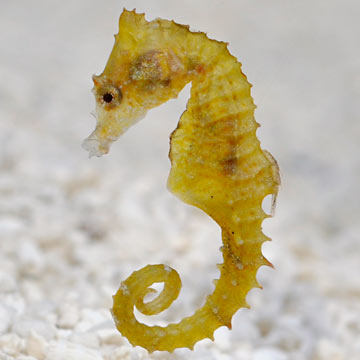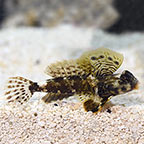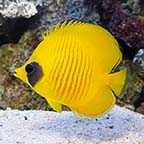
Additional locales and sizes may be available!
Additional locales and sizes may be available! Email me when availableQuick Stats
What do these Quick Stats mean? Click here for more information
What do these Quick Stats mean? Click here for more information
Overview
Are you looking for a challenging way to take your aquarium experience to the next level? Difficult to maintain, but endlessly fascinating, The Dwarf Seahorse (also known as the Seapony) is usually brown or white in color, though some may be yellow or yellow with black stripes; still others may be white with little black dots.
The Dwarf Seahorse requires a small, species-only aquarium and does best in groups of 4 or more. When maintaining only one or two Dwarf Seahorses, a 5-gallon aquarium is suitable; when maintaining more than 10 Dwarf Seahorses, use a 10 gallon aquarium. The smaller aquarium size helps concentrate the food. The aquarium should have a sponge filter.
The Dwarf Seahorse requires a continuous diet of freshly-hatched baby brine shrimp, copepods, and other shrimp larvae. It can be housed with snails, micro hermits, and small pipefish, however, the pipefish generally out compete it for food. It likes to grasp Caulerpa or other items with its prehensile tail. Live rock and live sand may contain stinging animals that can be aggressive towards this seahorse.
The Dwarf Seahorse can breed in an aquarium if it receives more than 12 hours of light. The mating ritual is fascinating to observe and it mates often. The male will show off for its mate and blow up its pouch, shake and dance, and change different colors. When the eggs are ripe, the female will deposit her eggs inside the male pouch as they travel up the water column together. In about 10-14 days, the male will give birth to an average of 10-30 fry, which are independent from birth and will eat baby brine shrimp. The babies are well-developed and use their prehensile tails almost immediately, growing very fast when provided with plenty of newly-hatched brine shrimp each day, and will double in size in just 17 days, and after 3 months, will be ready to mate.
Approximate Purchase Size: 1/2" to 1-1/2"











